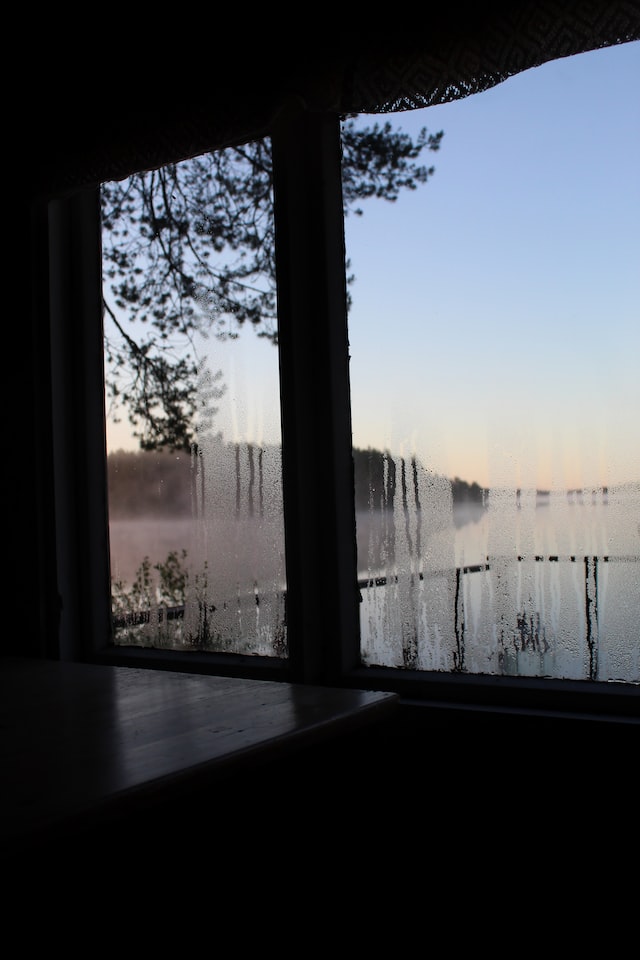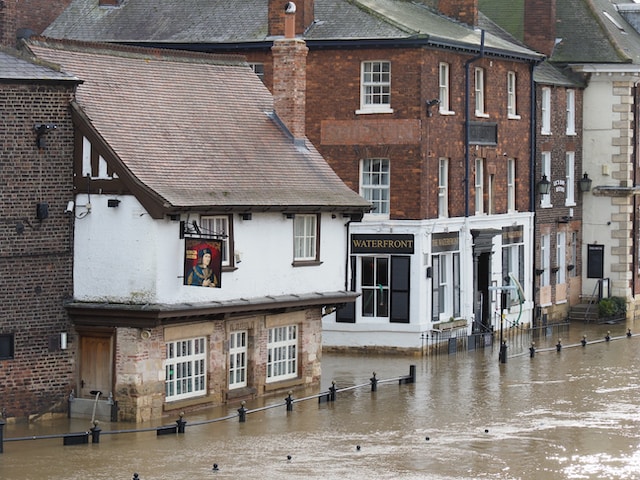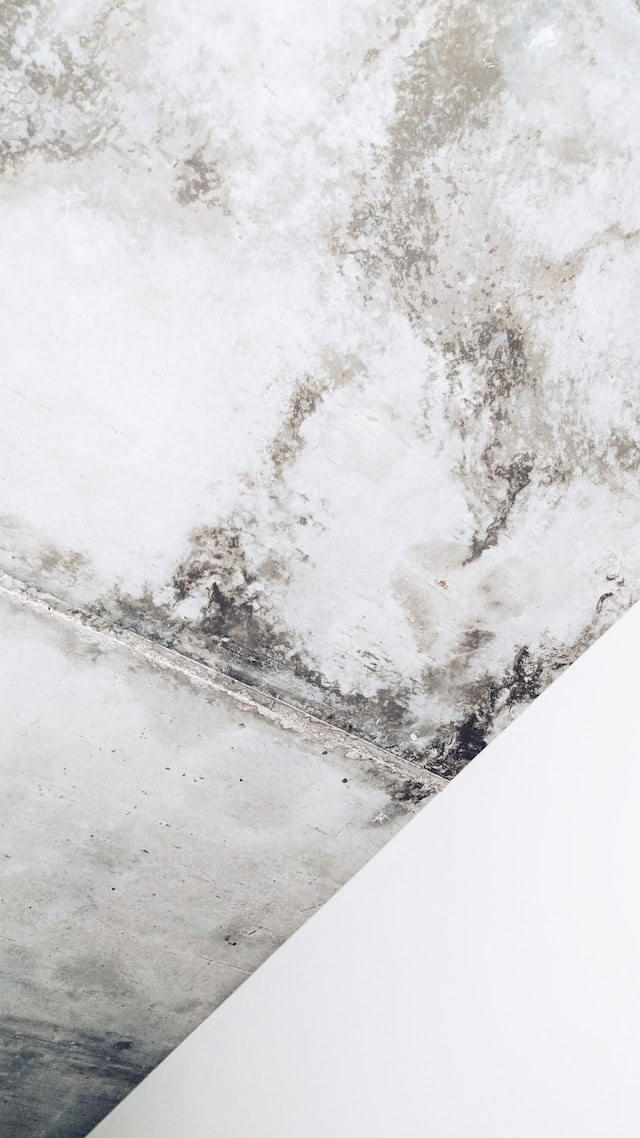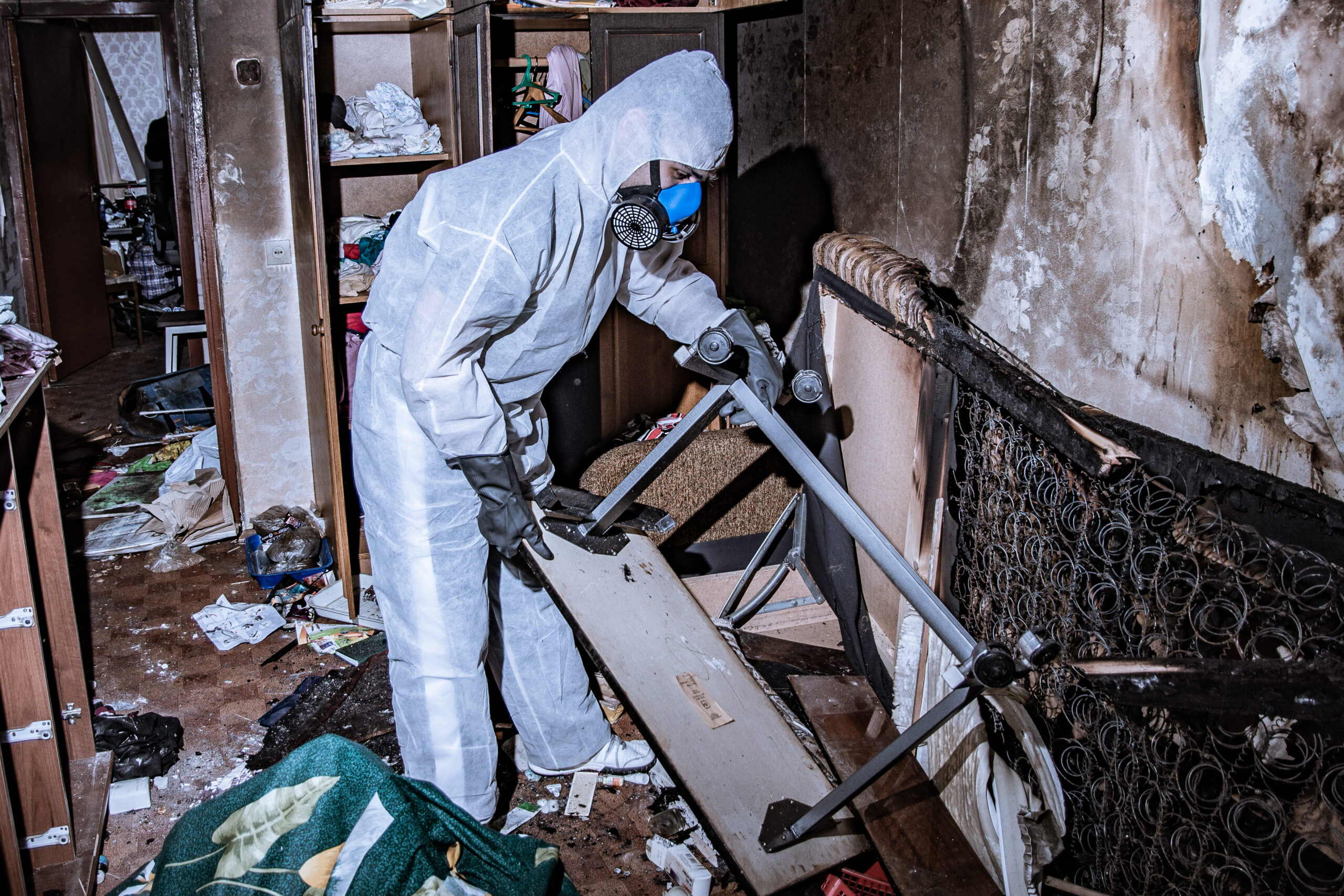Have you ever found yourself staring at a sea of destruction, where once stood your cherished home? That’s the heart-wrenching reality many face in the aftermath of floods. Flood damage cleaning isn’t just about mopping up water and airing out rooms – it’s an essential step to reclaiming your sanctuary.
This post is a lifeline thrown into those turbulent waters. A comprehensive guide that won’t merely skim the surface but delve deep into everything you need to know about flood restoration.
We’ll expose hidden dangers lurking within different types of floodwaters and reveal crucial preventive measures against future deluges. And for those knee-deep in clean-up, we’ll walk you through effective strategies for both residential and commercial properties while keeping health risks at bay.
Get ready for an adventure as we explore high-risk areas in the UK, such as Hull, Carlisle, and Lancaster.
Table Of Contents:
- Understanding the Impact of Flood Damage
- Types of Water Involved in Flood Damage
- Preparing for Flood Damage Cleaning
- Residential Property Cleanup After Floods
- Commercial Property Cleanup After Floods
- Health and Safety Considerations During Cleanup
- Professional Standards for Flood Damage Cleanup
- FAQs in Relation to Flood Damage Cleaning
Understanding the Impact of Flood Damage
Flood destruction isn’t just a bother, it’s an all-out onslaught on your home. It can leave you with a house that looks like it’s been through the wars and costs equivalent to building one from scratch. To give you some context, about 2,045,000 properties in the UK are at risk of flooding.
This isn’t something out of an apocalypse movie – these numbers come from real life statistics. Even more sobering is this: The annual cost of flood damage in the UK is estimated to be £1.4 billion.
So why does flood damage have such hefty consequences? Well, water has this pesky habit – once it invades your home or business premises during a flood event; it starts soaking into walls and flooring materials almost immediately.
The Wreaker-of-Havoc: Water
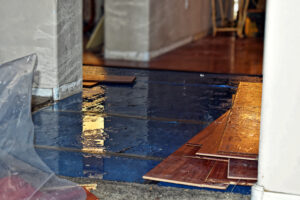
In simple terms, think about what happens when you leave bread soaked in water for too long…you got it—mould. But unlike mouldy bread which we can chuck away without blinking an eye—renovating homes after severe flood restoration work takes time and money.
The process often involves ripping up carpets or other floor coverings (say goodbye to that expensive hardwood), removing damaged plasterboard from walls (bye-bye beautiful wallpaper) then cleaning every square inch thoroughly before finally starting repairs.
Avert Your Eyes From This Unseen Enemy.
Besides causing structural havoc within our properties though — there’s also another invisible enemy lurking in the waters that can cause significant health problems: bacteria. So, it’s crucial to kick off flood damage cleaning right after a flood hits. Act quickly – it’s essential.
Flood damage is more than just a headache – it’s an all-out attack on your property, causing serious structural and health problems. Immediate action can help to limit the destruction caused by water soaking into walls and flooring, as well as ward off lurking bacteria. The quicker you start flood damage cleaning after a flood hits, the better.
Types of Water Involved in Flood Damage
Flood destruction is not only about the amount of H2O, but also what type it is. The three main types are White Water (clean), Grey Water (slightly dirty), and Black Water (highly contaminated). Each brings its own challenges when cleaning up after a flood.
Dangers Posed by Different Types of Flood Waters
Let’s start with White Water. This is typically rainwater or melting snow – clean and without harmful substances. Although it may not pose direct health risks like grey or black water, don’t be fooled into thinking you’re out of danger yet. Its power can still cause significant structural damage to properties.
Moving on to Grey Water, which originates from households and buildings without faecal matter. Think dishwashers, washing machines, showers – basically anything that might contain chemicals or bacteria but isn’t too toxic. It requires more care during cleanup due to potential contamination issues.
The last one is the nasty stuff: Black Water. This comes from sewage backups or floods involving river waters; full-on bacterial soup that’s dangerous if mishandled because it carries diseases such as hepatitis A and tetanus among others.
Cleaning up after each type demands specific precautions for safety reasons and to make sure any health risks are removed.
| Type Of Floodwaters | Potential Health Risks |
|---|---|
| White/Clean: | No immediate risk but can cause structural damage |
| Grey: | Chemicals and bacteria, potential contamination issues |
| Black/Contaminated: | Serious diseases like Hepatitis A and Tetanus among others. |
Preparing for Flood Damage Cleaning
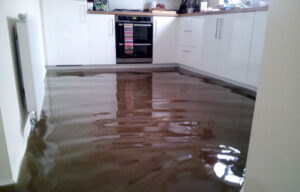
Extreme weather conditions can bring on a flood faster than you’d think. A key step in the cleanup process is understanding how to prevent more damage before it happens.
The Importance of Rapid Drying
Dampness left behind after a flood becomes an open invitation for mould and mildew. Speedy drying helps keep these unwanted guests at bay, but there’s more to it than just cranking up the heat or letting nature do its thing.
Rapid drying means taking control of your environment. For instance, using industrial fans and dehumidifiers alongside heaters can speed up evaporation rates drastically compared to leaving things alone.
Why does this matter? Because every hour that passes allows further damage from mould growth and structural instability due to waterlogged materials. With climate change increasing our risk of floods by 20% – potentially even as high as 90% – knowing how to dry out quickly could be what saves your property from total ruin.
- Flood prevention measures: They range from sealing basements against incoming water, installing sump pumps for emergency drainage, or making landscaping changes like sloping lawns away from buildings.
- Weighing weather conditions: In rainy seasons especially, keeping an eye on forecasts lets you prepare early when floods are likely so you can protect vulnerable areas beforehand rather than scramble during a crisis situation.
Here’s where checking UK’s Met Office website regularly comes handy. Their timely alerts about extreme weather conditions might buy you some precious time.
Prioritise Safety First.
In all situations involving flood clean-up remember: safety first. Wet surfaces are slippery, and electrical systems could be compromised. So turn off power at the mains if you suspect water has reached outlets or wiring.
Remember to wear protective gear like rubber gloves and boots during clean-up work. It’s also a good idea to get a tetanus shot before starting cleaning since floodwater can carry bacteria causing serious diseases.
We hope this gives you some insight into preparing for flood damage cleanup. Stay safe.
Quick drying and preventive measures are vital in flood damage cleanup. Rapid evaporation using industrial fans, dehumidifiers, and heaters can help prevent mould growth and structural instability. Measures like sealing basements or installing sump pumps could reduce incoming water risks. Also, keep safety first by wearing protective gear during the cleaning process.
Residential Property Cleanup After Floods
Don’t let the aftermath of a flood get you down; it can be remedied with the right approach and tools. With them, you can bring any property back to its former glory!
A Detailed Guide on How Homeowners Can Effectively Clean Their Properties Post-Flood
The first step in cleaning up after a flood is to use a water extraction unit. This tool helps get rid of standing water that’s stubbornly clinging onto your carpets and floors like an uninvited guest at a party.
Drying solutions are also crucial because leaving surfaces wet could be an open invitation for mould to move in – and trust us, they’re not great housemates. The trick here is to start drying as soon as possible using dehumidifiers or high-speed air movers.
Kitchen Appliances And Mould Remediation
Kitchen appliances may seem sturdy but they too need care after floods. Make sure to clean them thoroughly inside out – even small pockets of hidden moisture could cause problems down the line.
Mould remediation needs special attention since these little fungi are more than just unsightly; they pose serious health risks too. Consider getting professional help if you suspect widespread mould growth because DIY methods might not cut it when dealing with this tenacious tenant.
Restoring Furniture And Belongings After A Flood
If floods have taken their toll on your furniture, despair not. Some pieces might still be salvageable with some tender love and care (and maybe some wood oil).
Sadly though, porous materials like mattresses or stuffed toys often have to be discarded post-flood due their penchant for harbouring bacteria – another reason why kids should always put away their toys!
With the right tools, knowledge and a dash of patience, cleaning up after floods is manageable. Remember to always prioritise safety during cleanup – you don’t want any more water-related mishaps.
Don’t let floods turn your home into a long-term disaster. Use water extraction units and drying solutions to remove standing water and prevent mould growth. Clean kitchen appliances thoroughly, consider professional help for serious mould issues, and restore or replace damaged belongings as necessary. Remember, safety is paramount in flood cleanup.
Commercial Property Cleanup After Floods
Coping with flood destruction can be an intimidating challenge, particularly in the case of commercial premises. The first step towards restoration involves expert advice and the use of water damage remediation services.
Expert Advice on Commercial Property Restoration
The impact of floods on buildings can be devastating, but fear not. With professional guidance from experienced hands in the construction sector, you’ll get your business back up and running in no time. They know exactly how to tackle everything from soggy carpets to soaked drywall. Plus, they have access to top-notch drying solutions that speed up recovery times significantly.
You might think it’s all about physical repairs at this point – fixing damaged walls or replacing ruined kitchen appliances perhaps? But there’s more than meets the eye here.
Dealing with Water Contamination in Commercial Properties
Floodwater often carries harmful bacteria and contaminants which need immediate attention before any refurbishment work begins. Mould growth can quickly become an issue if left unchecked; therefore mould remediation should be part of your cleanup plan as well.
Cleaning contaminated areas isn’t just good for building health – it also keeps employees safe upon their return post-flood.
Handling Insurance Claims After Flood Damage
We all dread dealing with insurance claims after a disaster like flooding because we know it’s going to involve endless paperwork and negotiations over home insurance claims—another headache amidst an already stressful situation.
To make things easier for yourself during these tough times, always document every detail immediately after discovering the flood damage. Include photos where possible – remember: evidence is key. Also keep receipts for any emergency repair works undertaken — these will help support your claim further down the line. This guide provides helpful information on how to tackle the task of dealing with flood damage.
In conclusion, dealing with flood damage is no small feat. However, with the right steps and expert advice, it’s definitely manageable.
Dealing with flood damage in commercial properties can seem daunting, but don’t worry – it’s totally doable with the right help and strategy. You’ll need professional advice for repairs, quick action on water contamination, and thorough documentation for insurance claims. And let’s not forget about safety. Protecting your team from health risks is just as important.
Health and Safety Considerations During Cleanup
Flood cleanup is more than just a messy job. It’s a battlefield against harmful bacteria, mould growth, and highly unsanitary water. You’re not just up against mud stains; you’re facing potential health risks.
The Hidden Dangers of Flood Water
Flood water is no ordinary puddle. In fact, it’s often filled with parasites and bacteria that pose serious threats to human health. The worst part? These microscopic foes can linger on surfaces long after the waters recede.
You might be surprised to learn floods are responsible for dangerous health risks like electrocution or sewage contamination. This isn’t your average spring cleaning; this is bio-hazard territory. Take precautions to ensure your safety while clearing up after a flood.
Safety First: Protecting Yourself from Health Risks
Before starting any flood damage cleanup work, make sure all electrical devices are unplugged or switched off at the mains – electricity loves making unexpected appearances in damp conditions.
Gear yourself up as if going into battle – because in many ways, you are. Donning rubber gloves and waterproof boots will help protect your skin from contaminants lurking in the water.
Cleaning vs Disinfecting: Knowing the Difference
Cleaning alone won’t cut it here folks. To properly tackle those nasty germs left behind by black water flooding (the nastiest type), you’ll need to disinfect thoroughly afterwards too. And remember – there’s no room for half measures when dealing with these pesky intruders.
Professional Standards for Flood Damage Cleanup
The cleanup of flood damage isn’t a task to be taken lightly. It’s not just about mopping up the water and drying out your carpets, but following a set of professional standards outlined in the British Standard PAS 64 guidelines.
The Role of Hygiene Testing Post-Cleanup
Now you might be thinking, “Hygiene testing? What’s that got to do with floods?” But let me tell you – it plays an important role.
Cleaning up after a flood doesn’t mean everything is back to normal. There could still be hidden threats lurking around. That’s why hygiene testing post-cleanup is crucial.
Ensure there’s nothing left behind like germs or mould spores that could lead to serious health issues in the future. Think of it as having your very own detective on site, ensuring every inch is safe.
This goes hand-in-hand with thermal monitoring and environmental data logging – these practices ensure all risks have been eliminated from sight, touch… even smell.
All this rigorous follow-up work falls under those industry best practices we mentioned earlier – British Standard PAS 64 guidelines. And remember folks; they’re not just ‘nice-to-haves’, they’re necessary precautions designed by experts who know their stuff when it comes to mitigating any further risk.
FAQs in Relation to Flood Damage Cleaning
How do you clean up after flood damage?
You start by wearing protective gear. Then, extract standing water using pumps or wet vacs and dry out the area with fans or dehumidifiers. Disinfect surfaces next to kill any bacteria.
How do you disinfect a floor after a flood?
Clean the surface first with soap and hot water. After that, apply a solution of 1 cup bleach mixed into 5 gallons of water for effective disinfection against harmful pathogens.
Can furniture be cleaned after a flood?
Absolutely. But it depends on how damaged they are. Solid wood pieces can often be salvaged, while upholstered items might need professional cleaning due to potential mould growth.
How do you clean concrete after a flood?
To cleanse concrete post-flood, scrub it using soapy warm water and then rinse thoroughly. For stubborn stains or contaminants, consider pressure washing for deeper cleansing.

